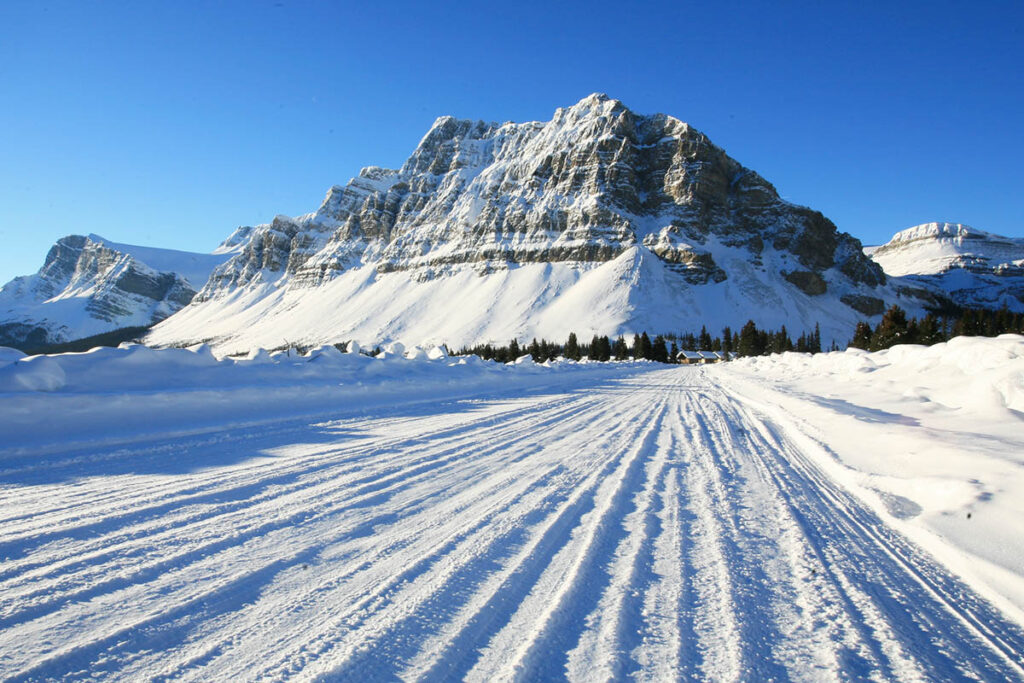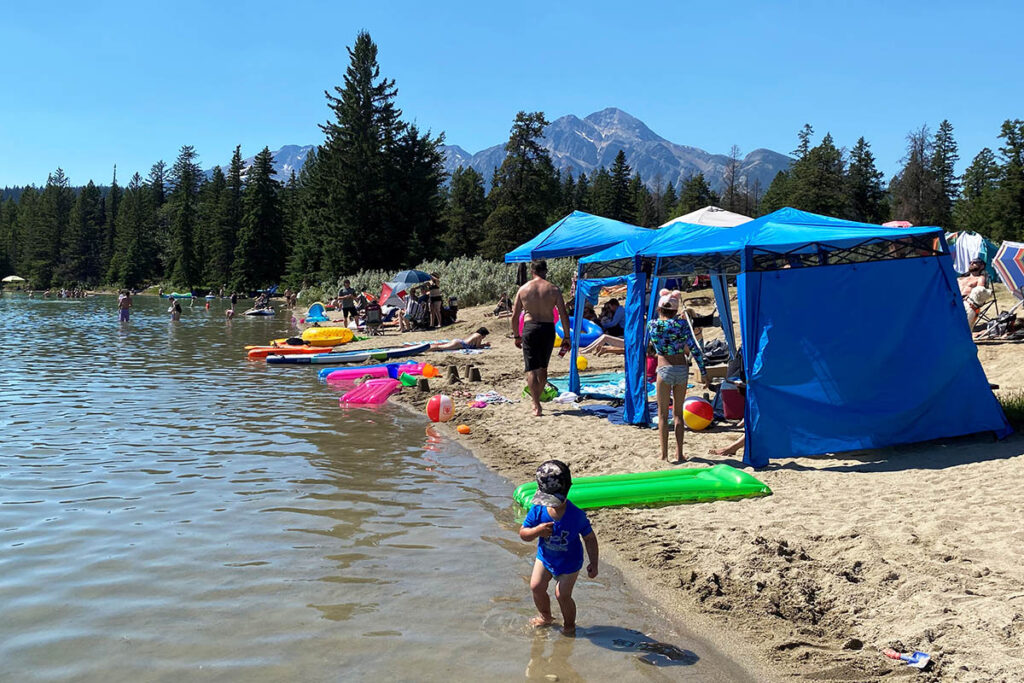Canadian Rockies Weather
More than any other factor, prevailing moisture-laden westerlies blowing across British Columbia from the Pacific Ocean dictate Canadian Rockies weather. The cold heights of the mountain peaks wring the winds dry, making for clear, sunny skies in southern Alberta; Calgary gets up to 350 hours of sunshine in June alone–good news unless you’re a farmer. In winter, the dry winds blasting down the eastern slopes of the Rockies can raise temperatures on the prairies by up to 40°C (104°F) in 24 hours. Called chinooks, these desiccating blows are a phenomenon unique to Alberta.
Elevation and, to a lesser degree, latitude are two other factors affecting the climate within the mountain ecosystem. Elevations vary from 800 metres (2,600 feet) above sea level at Radium Hot Springs to 1,500 metres (4,920 feet) at Lake Louise to 3,954 metres (12,970 feet) at the summit of Mount Robson. As a general rule, temperatures fall 5°C (9°F) for every 1,000 metres (3,280 feet) of elevation gained. Another interesting phenomenon occurring in the Canadian Rockies is temperature inversion, in which a layer of warm air sits on top of a cold air mass. During these inversions, high- and low-country roles are reversed; prairie residents can be shivering and bundling up, while their mountain fellows are sunning themselves in short sleeves.
To get a firsthand look at weather conditions in the region, click through to our Canadian Rockies webcams page.
Canadian Rockies Seasons
Summer in the mountains is short, but the days are long. With up to 17 hours of daylight around the summer solstice of June 21, this is an ideal time for travel and camping out. The months on either side of summer are ideal for touring, especially September, when rainfall is minimal. Winter is cold, but the skiing and snowboarding are fantastic.
January is usually the coldest month of WINTER, when Banff’s average temperature is under 0°C (32°F). In winter, extended spells of -30°C (-22°F) are not uncommon anywhere in the mountains, and temperatures when combined with wind chill occasionally drop below -40°C (-22°F). The coldest temperature recorded was -52°C (-62°F), in Lake Louise on January 25, 1950. Severe cold weather is often accompanied by sunshine; the cold is a dry cold, unlike the damp cold experienced in coastal regions. Cold temperatures and snow can be expected through mid-March.

Winter driving on the Icefields Parkway.
Although March, April, and May are, more or less, the official months of SPRING, snow often falls in May, many lakes may remain frozen until June, and snow cover on higher mountain hiking trails remains until early July. During this period of the year, the mountains are often affected by low-pressure weather patterns from the southeast, creating continuous days of rain, especially in the south.
Things warm up in SUMMER. July is the hottest month, with Banff, Jasper, and Canmore’s average daytime temperature topping out above 23°C (73°F) and Radium Hot Springs and Golden enjoying average daytime highs of 29°C (84°F) and 27°C (81°F), respectively. On hot days, the temperature can hit 30°C (86°F) along lower-elevation valleys. Again, because of the dryness of the air, these temperatures are more bearable here than in coastal regions experiencing the same temperatures.

Beach life at Lake Annette, Jasper National Park.
By late September the FALL mountain air begins to have a distinct chill. October brings the highest temperature variations of the year; the thermometre can hit 30°C (86°F) but also dip as low as -10°C (14°F). Mild weather can continue until early December, but generally the first snow falls in October, and by mid-November winter has set in.
Current Canadian Rockies Weather Conditions
For each region of the Canadian Rockies, we provide current weather conditions on these pages:
Banff National Park
Jasper National Park
Yoho National Park
Kootenay National Park
Canmore
Kananaskis Country
Waterton Lakes National Park
We also provide current weather conditions to these specific destinations:
Lake Louise
Mount Assiniboine
Lake O’Hara
Maligne Lake
Icefields Parkway
